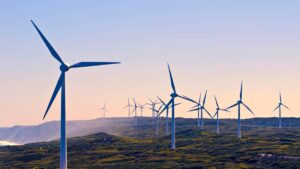Oil prices tipped to rocket as supply struggles with post-COVID demand surge

Pic: Getty
Can the oil industry increase production to meet any increase in demand once the world emerges from the lockdowns imposed by the COVID-19 pandemic?
Natural resources research firm Goehring & Rozencwajg Associates believes that while OPEC+ production will likely rebound in response, non OPEC+ supply could slip, which will take prices much higher.
It noted that most of the slowdown in non OPEC+ has come entirely from proactively shutting in existing production including old wells that were only marginally economic before prices collapsed in 2020.
Additionally, low prices have curtailed US shale oil drilling with the number of rigs operating falling from more than 700 in November 2019 to the current 373 rigs.
Given that shale production requires the constant drilling of new wells to maintain production as shale wells have strong initial production but suffer from sharp subsequent declines, the drop in operating rigs all but guarantees that production will collapse going forward.
Low drilling activity could also lead to a depletion of production from non OPEC+ sources outside of US shale oil.
Goehring & Rozencwajg believes these factors will result in oil supply plummeting, leaving the market in an extreme deficit.
The firm is not the only one that has touched on this issue with Goldman Sachs noting that underinvestment in oil and gas exploration and production will put upward pressure on oil price.
Oil demand
There may be a short pause before that happens though.
Both OPEC and the International Energy Agency have flagged that world oil demand in 2021 is expected to recover at a slower pace than they previously expected.
While COVID-19 vaccinations are now available, the IEA noted that it will be months before enough people have been vaccinated to make an impact on oil demand.
This may provide some buffer for non OPEC+ producers before demand starts soaring again though it remains to be seen how much production can be restored.
Longer term, Norwegian energy intelligence firm Rystad Energy forecast in November last year that oil demand could peak at 102 million barrels per day by 2028 before declining to 62MMbbl/d by 2050.
New energy mix
The growth of renewable energy may also act as a further check on oil.
BloombergNEF noted that 2020 was the first year to see combined wind and solar installations exceeding 200 gigawatts; the biggest financing ever in non-hydro renewables, at $8.3 billion for the first two stages of the UK’s Dogger Bank offshore wind project; and more governments turning greener with China setting a goal of net-zero emissions by 2060.
It expects the new level of spending in renewable energy to continue in 2021 with electric vehicle sales expected to jump while solar installations look set to have another record year.
The new Biden administration is also expected to result in an upsurge in US renewables and electric transport.
Related Topics

UNLOCK INSIGHTS
Discover the untold stories of emerging ASX stocks.
Daily news and expert analysis, it's free to subscribe.
By proceeding, you confirm you understand that we handle personal information in accordance with our Privacy Policy.








